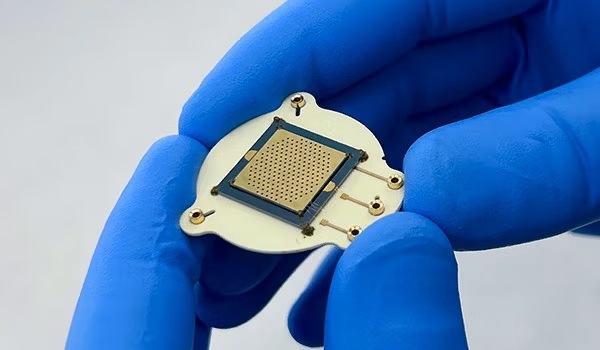Serum Prostate-Specific Antigen Measured by Tandem Mass Spectrometry
By LabMedica International staff writers
Posted on 23 Oct 2014
Prostate-specific antigen (PSA) is a widely used blood test for detection and monitoring of prostate disease and many clinicians assume that all test methods produce essentially the same results, though differences do exist. Posted on 23 Oct 2014
PSA is a 34-kDa glycoprotein with chymotrypsin-like enzyme activity that circulates both in free forms and complexed to various enzyme inhibitors including anti-chymotrypsin and α2-macroglobulin. Prostate-specific antigen bound to α2-macroglobulin is not detected by commercial PSA immunoassays.

Image: The API 5000 triple quadruple mass spectrometer (Photo courtesy of AB SCIEX).
Scientists at the Mayo Clinic College of Medicine (Rochester, MN, USA) developed a strategy to use a mass spectrometry (MS) assay to measure PSA concentrations that measures only the immune-reactive forms. Prostate-specific antigen is immune extracted from serum using antibodies directed to different PSA epitopes. A combination of three monoclonal anti-PSA antisera, which are directed to different PSA epitopes, was used for immune extraction of PSA from serum. PSA was extracted from serum, trypsin digested, and the LSEPAELTDAVK peptide was quantitated.
Absolute quantitation was performed by liquid chromatography–tandem mass spectrometry using a CTC Analytics HTC PAL auto sampler (LEAP Technologies; Carrboro, NC, USA; www.leaptec.com), a Shimadzu 10-AD binary pumping system (Shimadzu Scientific Instruments; Columbia, MD, USA), and an API 5000 triple quadruple mass spectrometer (AB SCIEX; Framingham, MA, USA). Validation of clinical utility and comparisons with two immunoassays were performed using frozen sera aliquots from 100 men undergoing prostate biopsy, 50 negative, 50 with cancer, and five serial samples collected over time from five men with advanced prostate cancer.
The antibody extraction efficiency was greater than 99%. The assay has an analytic range from 1.2 to 76 ng/mL, with precision ranging from 8.6% at 1.5 ng/mL to 5.4% at 27 ng/mL. The mass spectrometry assay correlated well with the two commercial immunoassays. All three assays showed statistically equivalent separation of prostate cancer from benign disease using receiver operating characteristic curve analysis.
The authors concluded that their MS assays are the first potential reference mass spectrometry assays that measure the same forms of PSA as the commercial immunoassays. These assays can reliably quantitate PSA concentrations in male sera that closely match existing immunoassays, and these assays are traceable to the international PSA standard with the proteins and therefore make the measurement system incomplete. Another advantage of their immune extraction is the increase in the relative concentration of PSA caused when the peptides from the PSA in a larger sample of serum are re-suspended in a smaller injection volume of buffer for the MS. This increase in concentration helps improve the robustness of the MS assay. The study was published on the October 2014 issue of the journal Archives of Pathology & Laboratory Medicine.
Related Links:
Mayo Clinic College of Medicine
LEAP Technologies
AB SCIEX













